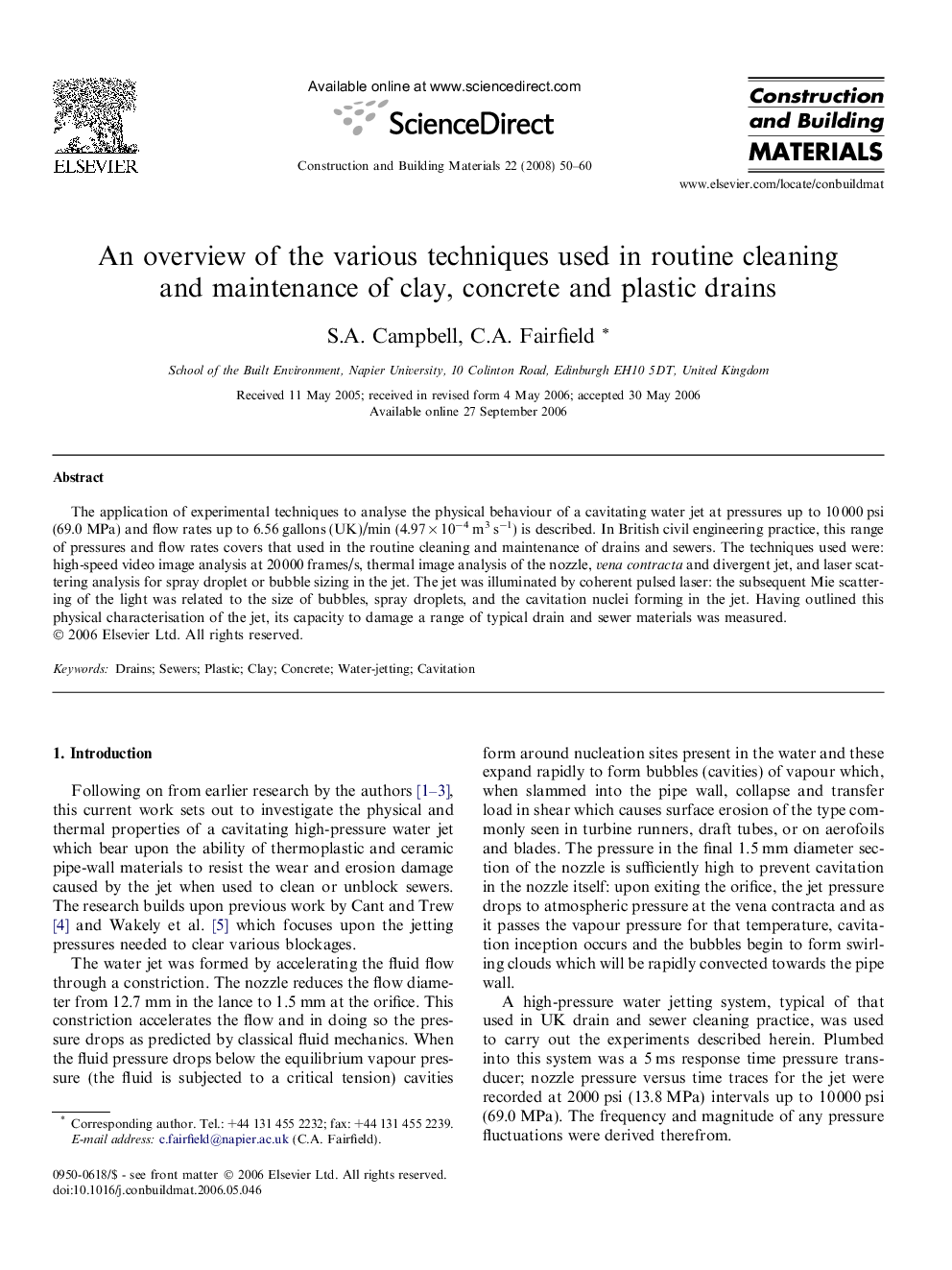| Article ID | Journal | Published Year | Pages | File Type |
|---|---|---|---|---|
| 261016 | Construction and Building Materials | 2008 | 11 Pages |
The application of experimental techniques to analyse the physical behaviour of a cavitating water jet at pressures up to 10 000 psi (69.0 MPa) and flow rates up to 6.56 gallons (UK)/min (4.97 × 10−4 m3 s−1) is described. In British civil engineering practice, this range of pressures and flow rates covers that used in the routine cleaning and maintenance of drains and sewers. The techniques used were: high-speed video image analysis at 20 000 frames/s, thermal image analysis of the nozzle, vena contracta and divergent jet, and laser scattering analysis for spray droplet or bubble sizing in the jet. The jet was illuminated by coherent pulsed laser: the subsequent Mie scattering of the light was related to the size of bubbles, spray droplets, and the cavitation nuclei forming in the jet. Having outlined this physical characterisation of the jet, its capacity to damage a range of typical drain and sewer materials was measured.
